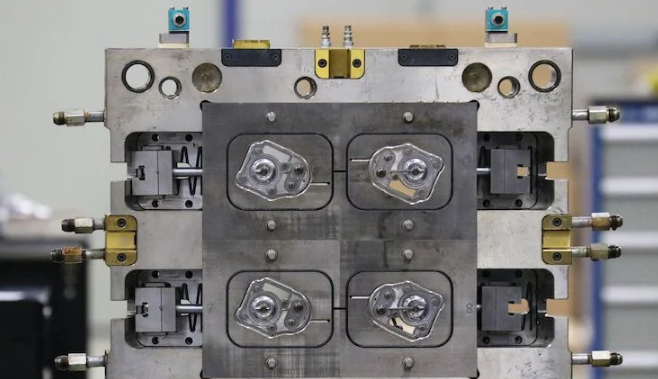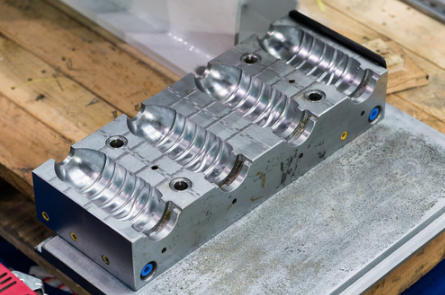The steel types used in injection molding are typically tool steel, stainless steel, and high-speed steel.
Types of Steel Commonly Used in Injection Molding
Properties of Tool Steel
Tool steel is a predominant choice in injection molding for its exceptional hardness and resistance to abrasion.

Hardness and Wear Resistance: Tool steels, like D2 or A2, exhibit high hardness levels, typically in the range of 58-62 Rockwell Hardness (HRC). This hardness translates into excellent wear resistance, making them ideal for high-volume production molds.
Heat Treatment Capabilities: These steels undergo heat treatment to achieve desired hardness and toughness. Post heat treatment, tool steel maintains dimensional stability, essential for precision in injection molding.
Cost Considerations: While tool steels offer superior performance, their cost is relatively higher. The price of tool steel can range from $2 to $4 per pound, depending on the specific grade and market conditions.
Advantages of Stainless Steel in Molding
Stainless steel is another popular choice, known for its corrosion resistance and durability.
Corrosion Resistance: Grades like 420 stainless steel are resistant to corrosion, a vital property for molds exposed to corrosive materials or humid environments. This resistance prolongs the mold’s lifespan and reduces maintenance needs.
Thermal Conductivity and Stability: Stainless steel has moderate thermal conductivity, facilitating stable temperature control during the molding process. This stability is crucial for producing parts with consistent quality.
Application Suitability: Due to its durability and resistance to corrosion, stainless steel is particularly suitable for molding medical and food-grade products, where hygiene and longevity are priorities.
The selection between tool steel and stainless steel in injection molding hinges on specific application requirements like volume, precision, and environmental conditions.
For a deeper understanding of these materials, refer to Steel in Injection Molding on Wikipedia.
Comparative Analysis of Steel Types for Mold Making
Hardness and Durability of Different Steels
This table compares the hardness and durability of various steels used in mold making:
| Steel Type | Hardness (HRC) | Durability | Cost Range (per pound) |
|---|---|---|---|
| Tool Steel (D2, A2) | 58-62 | High | $2 – $4 |
| Stainless Steel (420) | 48-52 | Moderate to High | $3 – $5 |
| High-Speed Steel (M2) | 60-65 | Very High | $4 – $6 |
| Carbon Steel (1045) | 42-48 | Moderate | $1 – $2 |
Tool Steel stands out for its exceptional hardness and durability, making it ideal for high-volume production molds.
Stainless Steel offers moderate hardness but excels in corrosion resistance.
High-Speed Steel is known for its superior hardness and is used in high-precision molds.
Carbon Steel, while less hard and durable, is a cost-effective option for less demanding applications.
Corrosion Resistance and Maintenance Needs
The following table provides insights into the corrosion resistance and maintenance requirements of these steel types:
| Steel Type | Corrosion Resistance | Maintenance Needs | Preferred Applications |
|---|---|---|---|
| Tool Steel (D2, A2) | Low | High | High-volume, abrasive materials |
| Stainless Steel (420) | Very High | Low | Medical and food-grade products |
| High-Speed Steel (M2) | Moderate | Moderate | High-precision, complex molds |
| Carbon Steel (1045) | Low | High | Cost-sensitive, non-corrosive applications |
Tool Steel requires more maintenance due to lower corrosion resistance.
Stainless Steel is the best choice for applications where corrosion resistance is critical, requiring minimal maintenance.
High-Speed Steel offers a balance between corrosion resistance and maintenance.
Carbon Steel, while economical, requires frequent maintenance due to its low corrosion resistance.
The choice of steel for mold making largely depends on the specific requirements of the application, balancing factors like hardness, durability, corrosion resistance, and cost.
For more detailed information, explore Steel Types in Mold Making on Wikipedia.
Specialty Steels for High-Precision Molds
Characteristics of High-Speed Steels
High-Speed Steels (HSS), such as M2 and M42, are crucial in the realm of high-precision mold making.

Exceptional Hardness and Wear Resistance: HSS can achieve hardness levels up to 64-66 HRC post heat treatment, making them extremely wear-resistant. This characteristic is essential for molds used in high-speed, high-volume production.
Thermal Stability: High-Speed Steels maintain their hardness and dimensional stability even at elevated temperatures (up to 600°C), crucial for maintaining precision in continuous operation.
Cost Implications: The cost of HSS is higher than conventional tool steels, typically ranging from $4 to $6 per pound. However, their durability and long lifespan offset the initial investment, especially in high-demand applications.
Applications of Alloyed Steels in Complex Molds
Alloyed steels, like P20 and H13, are specially formulated to meet the challenges of complex mold designs.
Versatility and Toughness: Alloyed steels offer a balance of toughness and hardness. For instance, P20 steel, with a hardness of around 28-32 HRC, is known for its excellent machinability and toughness, making it suitable for intricate mold designs.
High-Temperature Performance: Steels like H13 are widely used for hot work applications. They can withstand temperatures up to 600°C without losing temper, ideal for high-temperature molding processes.
Cost-Effectiveness for Complex Molds: While the cost of alloyed steels like P20 and H13 is higher than basic carbon steels, they provide a cost-effective solution for complex molds due to their blend of mechanical properties and machinability. The price range for these steels is typically between $3 and $5 per pound.
The choice of high-speed or alloyed steels in mold making significantly impacts the quality and efficiency of the injection molding process, especially when producing intricate and high-precision components.
For further insights, refer to High-Speed and Alloyed Steels in Mold Making on Wikipedia.
Impact of Steel Choice on Injection Molding Process
Influence on Mold Lifespan
The selection of steel significantly affects the lifespan of injection molding tools.
Tool Steel Durability: Using tool steels like D2 or A2, known for their hardness (58-62 HRC), can extend mold lifespan by up to 1.5 million cycles in high-volume production settings. The superior wear resistance of these steels plays a key role in this longevity.
Stainless Steel for Corrosive Materials: Choosing stainless steel, especially grades like 420, can be crucial when molding corrosive materials. These steels resist corrosion effectively, potentially doubling the lifespan of the mold compared to standard tool steel in such environments.
Cost vs. Lifespan Trade-off: While high-speed and alloyed steels might have higher initial costs, their extended lifespan can offer a better return on investment over time, especially in demanding applications.
Effects on Production Efficiency and Quality
The type of steel used in molds directly impacts the efficiency and quality of the injection molding process.
Thermal Conductivity and Cycle Time: Steels with higher thermal conductivity, like P20, can reduce cycle times by efficiently transferring heat. This can increase production efficiency by up to 20% compared to steels with lower thermal conductivity.
Precision in Complex Molds: High-speed and alloyed steels, which retain their shape and dimensions even under stress, are essential for producing high-precision components. They ensure consistent quality across large production runs.
Maintenance and Downtime: Steels that are less prone to wear and corrosion, such as stainless steel and high-speed steel, require less maintenance. This reduces downtime for repairs, enhancing overall production efficiency.
Selecting the appropriate steel type for an injection mold is a critical decision that influences not just the durability of the mold but also the efficiency and quality of the production process.
For more information, explore Steel in Injection Molding on Wikipedia.




